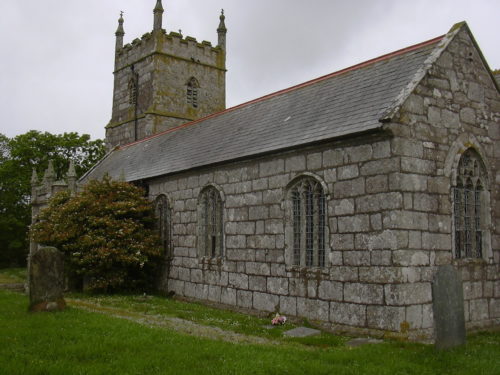Taking Orders

In Jane Austen’s writing we encounter a number of characters like Edward Ferrars and Edmund Bertram who are planning on taking orders. Her readers understood what that meant, but the concept is a little foreign to us, so here’s a quick rundown on what ‘taking orders’ meant. The English laws or primogenitor, intended to preserve the integrity of large landed estates, made it a challenge for younger sons of the landed gentry to establish themselves in life. If their family did not possess an additional estate for them to inherit or there was not some other relative to provide an inheritance, they had little choice but to make their way in the world. The question was, of course, how. By the second half of the 1700’s traditional ‘learned’ professions: the church, the law and medicine, took on a respectable character as ‘liberal professions’ befitting gentlemen. So these, together with the armed forces formed the primary options for gentlemen’s sons.
Requirements for taking orders

To be considered for ordination, a candidate needed a degree from Cambridge or Oxford. No theological colleges or courses of study existed so a standard honors degree satisfied the requirement. Afterwards, the candidate needed a testimonial from his college vouching for his fitness for ordination. Finally, he needed to locate a bishop and make arrangements for an examination that would satisfy the bishop of his competency in Latin, knowledge of the Scripture, and familiarity with the liturgy and church doctrine as written in the 39 Articles. Some bishops made only a cursory examination in these areas, only a few took their responsibilities more seriously.
After Japanning (slang for ordination referring to putting on black cloth, from the color of black japan ware) a man was qualified to administer the sacraments of the Church. His career would begin at age 23, as a deacon, assisting an ordained priest. At 24 he could be fully ordained and eligible to be in charge of a parish. After ordination, a priest (curate, vicar or rector) would still be referred as Mr. Surname as was Mr. Collins in Pride and Prejudice. He would never be referred to as Reverend in speech although he might receive letters as ‘The Reverend W. Collins’. Only if he attained higher standing in the church would his form of address change.
What did the clergy do once ordained?
The clergyman’s basic duties were to hold church service on Sundays and hold Holy Communion at least three times a year. The service, which might last as long as three hours, began with the clergyman declaring a the general confession of sins. The congregation repeated this after him and then he pronounced God’s forgiveness. Following this a psalm of praise and thanksgiving and passages from the Old and New Testaments were read. Then everybody stood and repeated the Apostles’ Creed. After all this, a sermon might be read.
Most priests took their sermons from books published for the purpose. Some would read extracts from the printed text. In other cases, adaptations might be written to suit particular circumstances. In general congregations enjoyed the use of familiar texts. Few clergymen wrote original sermons.
Midweek duties included baptisms, marriages and funerals and visiting the sick. In addition, parish meetings, at which the clergyman officiated, discussed local affairs including charity, parish employment, care of the poor, repair and maintenance of the church and election of the churchwardens. The parish was responsible for the administration of the poor laws and elected Supervisors of the Poor who collected the Poor Rate taxes from the wealthier parishioners. Road maintenance was also a responsibility of the parish and two Surveyors of Highways were appointed to supervise the maintenance and repair of the roads. Thus, the clergyman played a major role in the life of his parish community.
References
Collins, Irene. (1998) Jane Austen, The Parson’s Daughter . Hambledon Press.
Collins, Irene. (2002) Jane Austen & the Clergy. Hambledon Press.
Day, Malcom. (2006) Voices from the World of Jane. Austen David & Charles .
Grose, Captain (Francis). (2004) Dictionary of the Vulgar Tongue, 1811 ed. Ikon Classics
Le Faye, Deirdre. (2002). Jane Austen: The World of Her Novels. Harry N. Abrams
MacDonagh, Oliver . (1991) Jane Austen, Real and Imagined Worlds. Yale University Press.
by Maria Grace Copyright 2013, all rights reserved

Very interesting information! I had no idea that the clergyman would be responsible for the highways. I wonder why that was.
Pingback:The Regency Interpreter tackles Mansfield Park pt.2 - Random Bits of Fascination
Thank you for this information. Was it common for a curate to move to a neighboring county or did they pretty much stay in the same county? My ancestor William Johnson was an 18th-century curate who lived in Yorkshire. He was ordained a deacon in September 1762 and married there months later at Bolton cum Redmire. I have located a birth record of a child born in 1763 at Wooler, Northumberland. It is 100 miles from Bolton. The parents had the same names as my ancestors. I’m trying to determine if it’s the same couple. Thanks!
Very interesting. Please tell me where to find more information about the age of clergymen. The resources I’ve seen say a young man would usually have his “Oxbridge” degree by age 17, and might follow that with a Tour of 1-3 years, although less likely during the war. That would put him less than 21 when he comes home. What did he do between ages 21 and 23? I suppose he could have gone to get his MA, but I understand that wasn’t common unless he wanted to get a doctorate. Where did the information in this blog come from?
The references are listed at the bottom of the article.